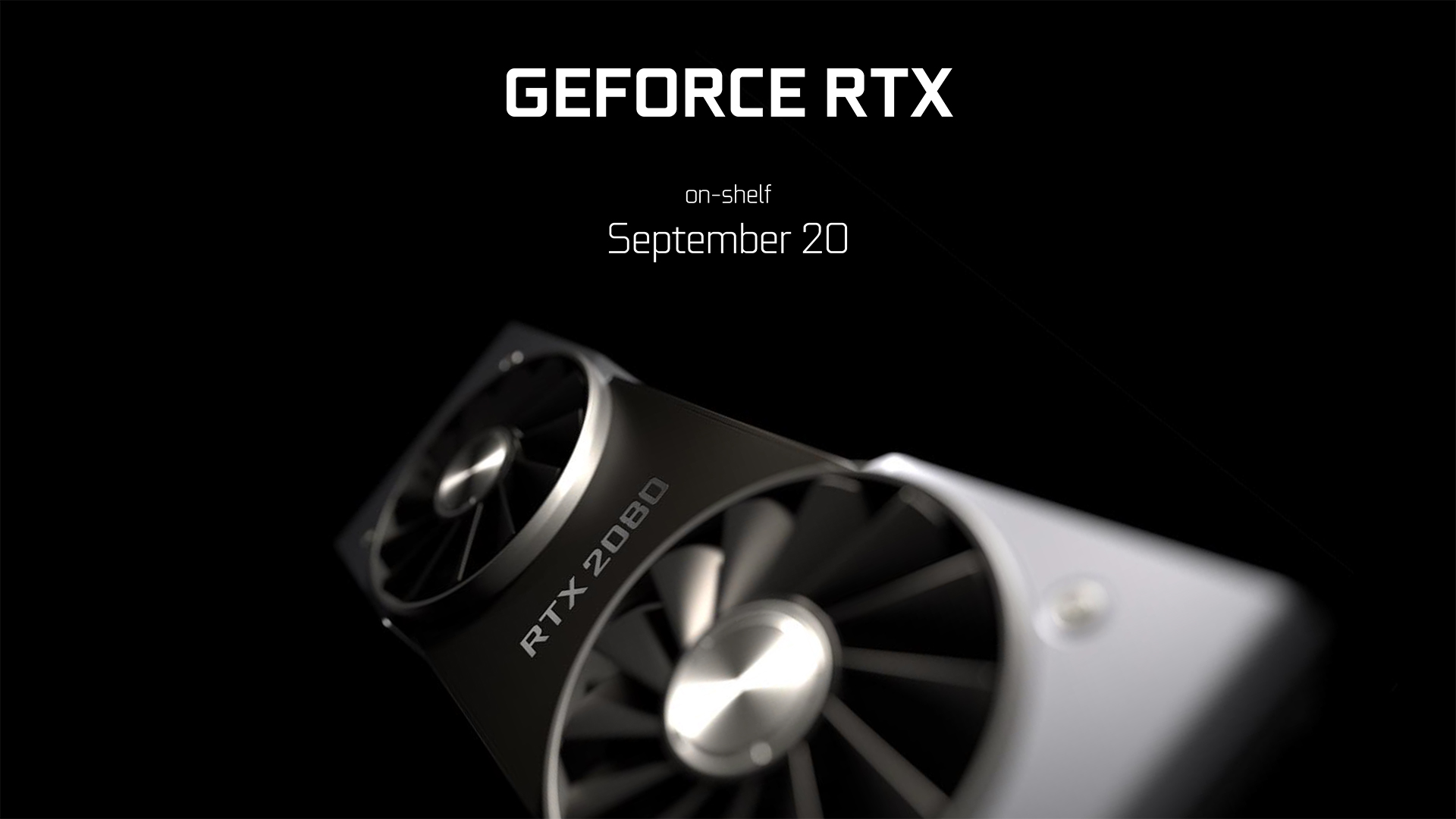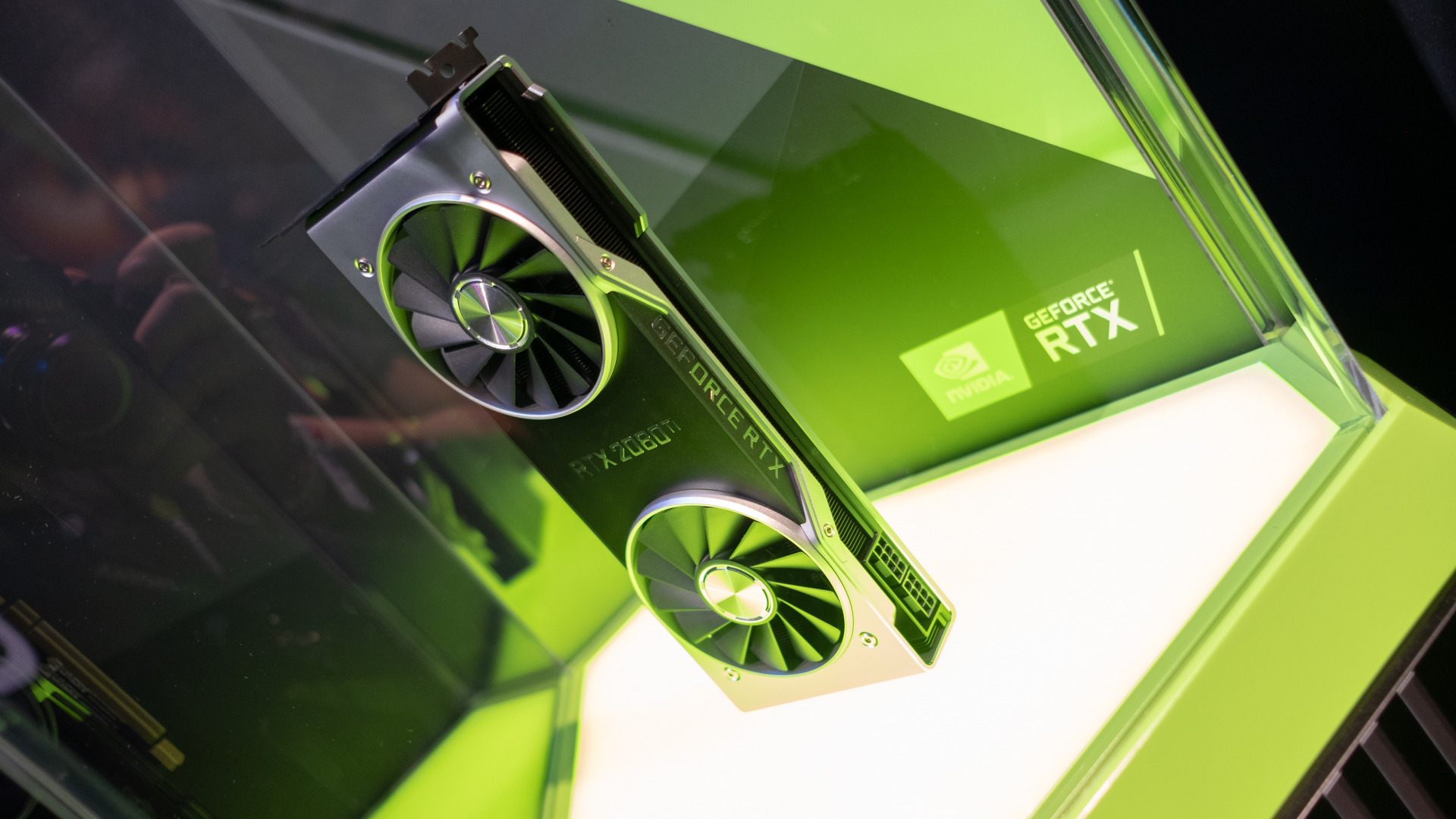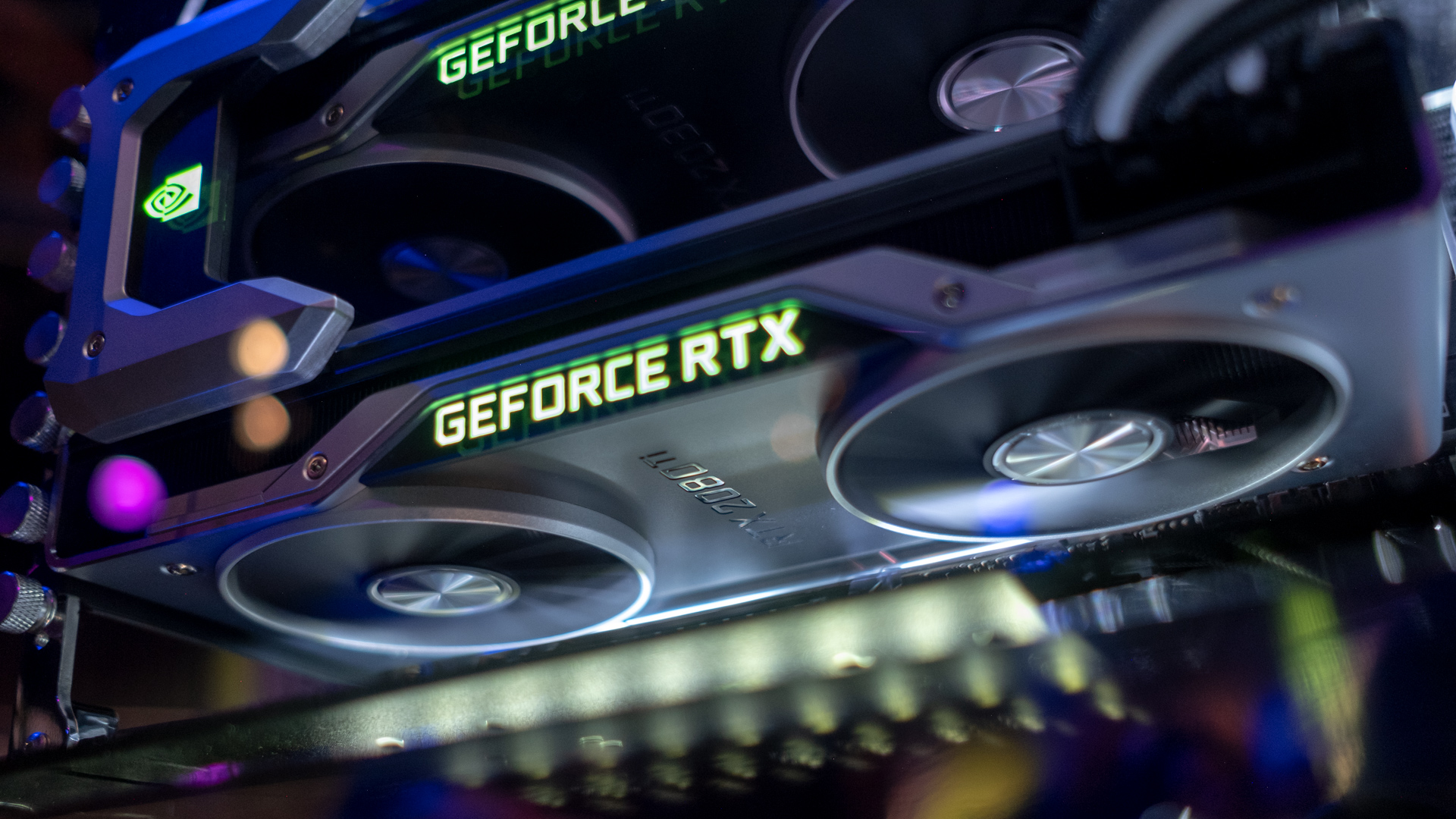Nvidia Turing release date, news and features
Nvidia left us waiting for Nvidia Turing for a long time, but, finally, the latest and greatest graphics card architecture for gaming is here. It was an excruciating two years, but it was worth it.
The Turing-powered Nvidia GeForce RTX 2080 Ti, RTX 2080 and RTX 2070 are poised to be the best graphics cards for the games we play over the next few years.
With Nvidia Turing, real-time ray tracing technology is available in a consumer graphics card for the first time – it could bring about a revolution in the way the best PC games look.
It’s a true paradigm shift as, the new GeForce RTX gaming cards may completely change look of the best PC games.
Cut to the chase
- What is it? Nvidia’s latest graphics card architecture
- When is it out? September 20
- What will it cost? $599 (£569, AU$899) - $10,000 (£7,830, AU$13,751)

Nvidia Turing release date
The Nvidia RTX 2080 is available now, while the RTX 2080 Ti and 2070 should be trickling out over the coming weeks. The 2080 Ti should be have limited availability in stores on September 27th, with preorders filtering out already. The GeForce RTX 2070, however, will follow on October 17th.
We’ve also seen some speculation that a mobile version of the RTX 2080 is on the way, and while previous speculation pointed to it launching by the end of 2018 – we have our money on it launching early on in 2019. Either way, if they’re nearly as powerful as Nvidia claims the desktop versions are, we’re going to see some extremely powerful gaming laptops very soon.

Nvidia Turing price
For starters, The Nvidia Quadro RTX GPUs are much more expensive, which should come as no surprise for high-end chips such as these.
- Nvidia Quadro RTX 8000: $10,000 (£7,830, AU$13,751)
- Nvidia Quadro RTX 6000: $6,300 (£4,935, AU$8,660)
- Nvidia Quadro RTX 5000: $2,300 (£1,800, AU$3,160)
Of course, these are graphics cards meant for commercial work in the visual effects industry
For more consumer-focused cards, the prices seem to have risen, as well. The Nvidia GeForce RTX 2080 Ti seems to be taking the place of Nvidia’s past Titan cards, whereas the other cards seem to fall in line with the 10-series cards.
The prices for the announced cards is as follows:
- Nvidia GeForce RTX 2080 Ti: $1,199 (£1,099, AU$1,899)
- Nvidia GeForce RTX 2080: $799 (£749, AU$1,199)
- Nvidia GeForce RTX 2070: $599 (£569, AU$899)
It should be noted that the prices on the store are a bit higher than what Nvidia CEO and founder Jensen Huang revealed at the Nvidia Geforce Celebration at Gamescom 2018 – at the time of writing. For instance, the 2080 Ti was initially revealed at $999, but that price isn’t currently reflected in the online store.

Nvidia Turing specs
The headline feature of Nvidia Turing is the inclusion of ray-tracing tech that can render more realistic visuals and lighting in real time without having to fall back on programming tricks. These specialized RTX cores essentially calculate how light and sound travel in a 3D environment at a rate of up to 10 GigaRays on the RTX 2080 Ti. These specialized cores will also supposedly allow Nvidia Turing-based graphics cards to process ray tracing up to 25 times faster than Pascal.
When these RTX Cores aren’t in use for processing ray tracing, they’ll essentially switch off, ceasing to draw any power.
In addition to these RTX cores, the Turing Architecture will also feature Tensor Cores, like the ones found in Volta. These specialized cores enable artificial intelligence and neural networking so that Turing cards get better at rendering over time – something previously exclusive to supercomputers.
With the ability to deliver 500 trillion Tensor operations a second, this technology accelerates deep learning training and inferencing. This will allow Nvidia to offer Deep Learning Super Sampling (DLSS), which will be a version of super sampling that won’t bring your computer to its knees. Even for games that don’t support this new DLSS tech, these AI-fueled cores should deliver traditional anti-aliasing much more efficiently – up to eight times.
As with Volta, Nvidia Turing is adopting GDDR6 memory – up to 11GB in the RTX 2080 Ti, which can clock in at up to 14Gbps, quite the leap over the Pascal-powered Nvidia Titan Xp that clocked in at 11.4Gbps.
The Nvidia GeForce RTX 2080 Ti is an absolute behemoth of a GPU. With 4,352 CUDA cores, 11GB of GDDR6 VRAM with a 352-bit memory bus and 18 billion transistors, it’s going to be capable of 4K Ultra gaming at high refresh rates for years to come. It’s no wonder it comes with such a high price tag.
The more mainstream RTX 2080 and RTX 2070 are both still quite impressive, though, and will absolutely destroy the previous generation. The former will feature 2,944 CUDA cores, 8GB of GDDR6 memory and will clocked at 1.5GHz at its base frequency. The 2070, though will be a bit weaker, coming with 2,304 CUDA cores 8GB of GDDR6 VRAM and clocked at 1,410Mhz base.
If you want to dive into deeper detail about how these cards will work we have you covered. Beyond that, we’ll be able to share more detailed performance numbers soon, so keep this page bookmarked, as we’ll update it just as soon as new information comes our way.
Thus far we only have partial specs on three Nvidia Quadro RTX cards:
Nvidia Turing Performance
Now that we’ve finally been able to test all of the new RTX graphics cards, we have a clear picture of how these cards perform, and frankly, both the RTX 2080 and 2080 Ti are beasts.
As long as you have the high-end specs to back them up, these new Turing cards are able to perform much faster than their Pascal equivalents, and will be able to push it even further once DLSS or deep learning super sampling is more widespread. And, thanks to the AA improvements in the Tensor cores, we’re seeing about a 20-40% increase in games that don't support DLSS.
In our benchmarks, the GeForce RTX 2080 is outperforming the GeForce GTX 1080 Ti by about 11% and the Nvidia GTX 1080 by a more impressive 32% in Middle Earth: Shadow of War in 4K. This performance difference is even more massive when you look at the Nvidia GeForce RTX 2080 Ti which not only is 20% faster than the RTX 2080 in the same title, but beats out the last-generation 1080 Ti by a massive 30%, destroying the GTX 1080 with a 45% performance delta.
Recently, some Nvidia RTX 2070 benchmarks leak out there. The latest leaks point to the RTX 2070 topping the GTX 1080 with a 3DMark Time Spy score of 8,121, but this score falls quite short of the RTX 2080 and 2080 Ti’s performance.
So, in traditional games, there’s no question that Nvidia Turing marks a total upgrade from Pascal. And, over time as drivers mature and users get ready to start overclocking their Turing cards, the difference is only going to grow. That’s not to mention the inclusion of incoming DLSS and ray tracing in games, which should only increase the Nvidia Turing performance gap.
When it comes to ray tracing, we have a better idea of how Nvidia Turing is going to handle performance. Rather than rendering using pure ray tracing techniques, the new graphics cards are going to use a hybrid method – combining both traditional rasterization and ray tracing in order to produce playable frame rates.
The method by which this will be achieved is “Bounding Volume Hierarchy,” or BVH which will track large portions of the scene being rendered for whether or not a ray is being bounced. The RTX cores will then dig deeper into that large portion until it finds the polygon that’s getting hit by the light ray. This method should impact performance far less than tracking each ray live – but will still be quite demanding. In short, Nvidia Turing makes ray tracing easier because it simplifies the math.
- Meanwhile, this the latest in AMD Vega
Contributer : Techradar - All the latest technology news https://ift.tt/2Dc2TFs

 Reviewed by mimisabreena
on
Saturday, October 13, 2018
Rating:
Reviewed by mimisabreena
on
Saturday, October 13, 2018
Rating:














No comments:
Post a Comment